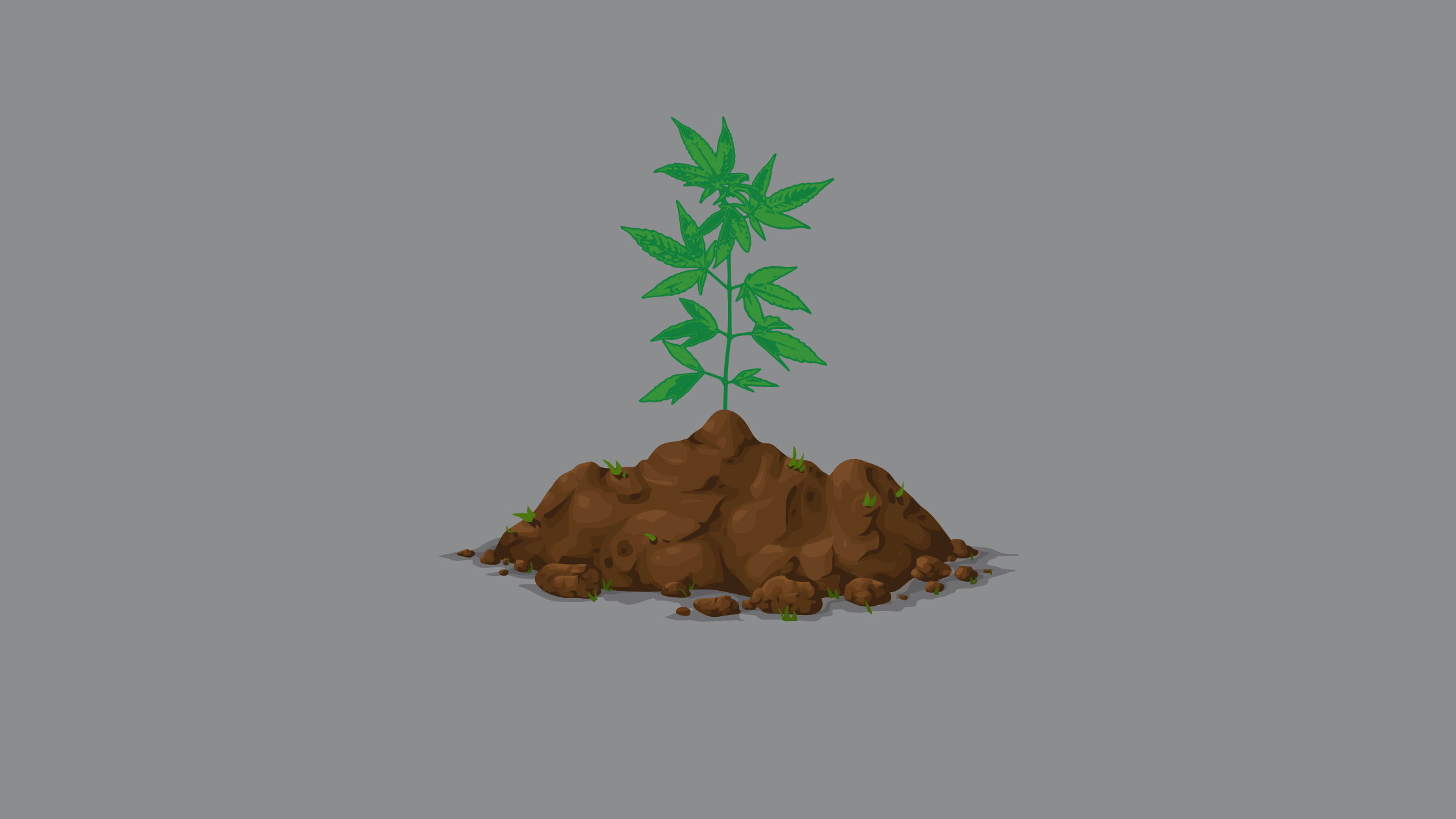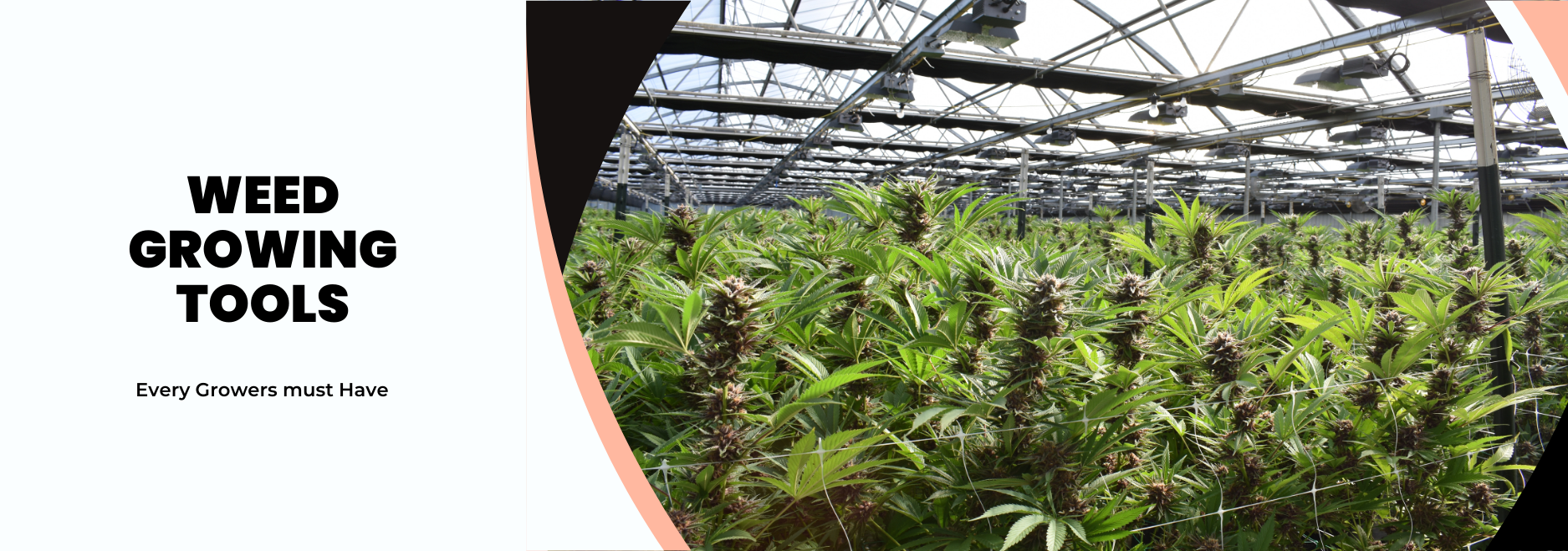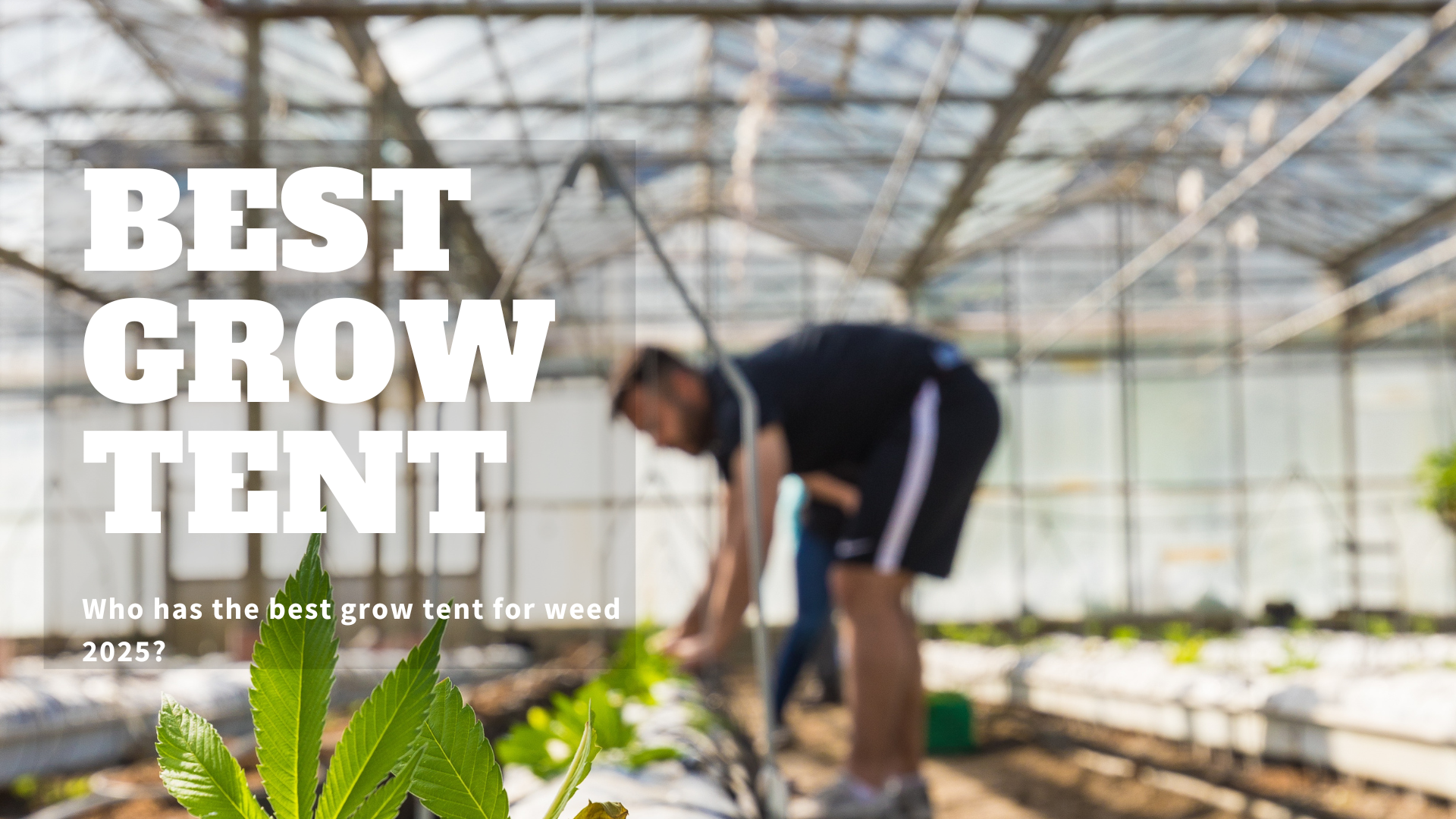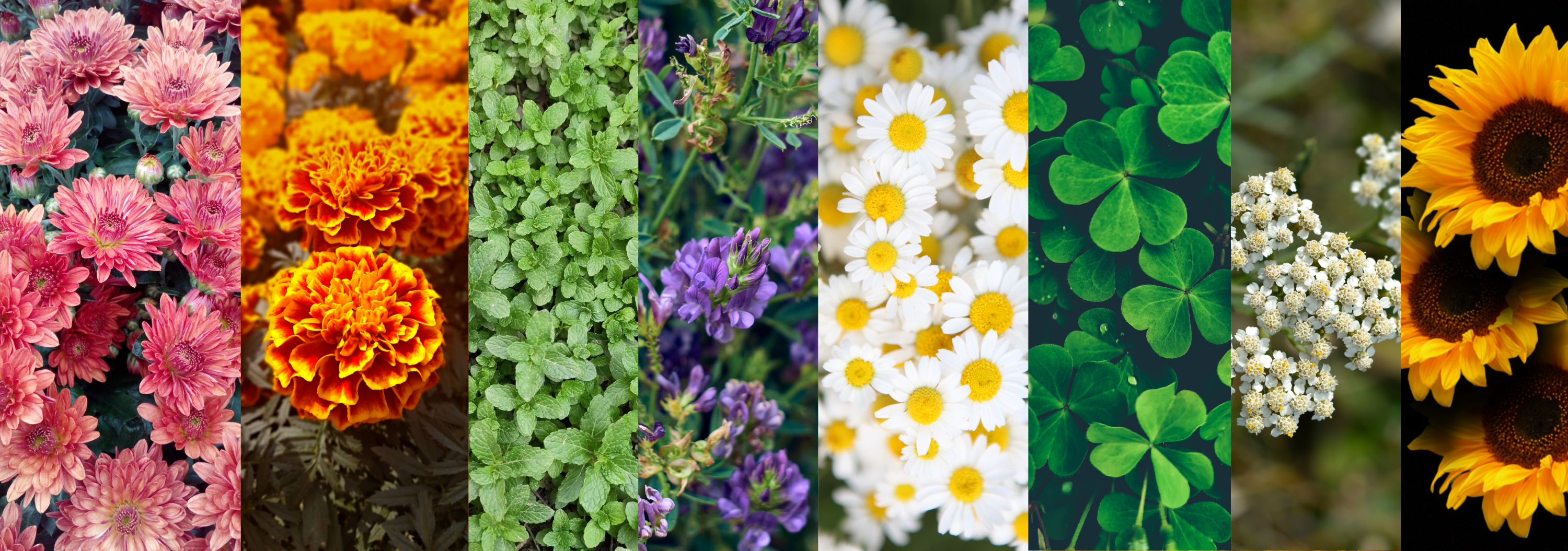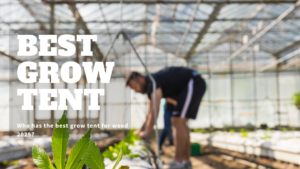Soil preparation is the foundation of any successful gardening or farming endeavor.
Whether preparing soil for planting flowers, vegetables, or cannabis, ensuring your soil is healthy and well-structured sets the stage for robust root growth and high yields.
It’s the foundation that supports the plants and helps them grow. In it are the ingredients – nutrients, organic matter, air, and water – plants need to thrive.
Take good care of her, and your plants will generously reward you. Don’t, and your efforts in time and money go to waste.
So, as you prepare to start growing, take a moment to consider the soil in which you intend to grow your favorite cannabis seeds or clones.
Types of soil

We’ll look at the three major types of soil cannabis growers will find: clay, sandy, and loam.
Clay is a heavy, sticky soil that sticks to your shoes when you walk through it.
Clay soils retain excessive water and do not enable sufficient air to penetrate the soil.
Sandy soil is loose and dry, so moving around is easy.
Sandy soils do not hold enough water, and flying sand can harm marijuana plants in windy locations.
Loam soil has elements from clay and sand, so it’s usually light and moist but can still be hard to break up if you try digging into the ground with your hands or feet.
The best soil for marijuana plants
Generally, the best soils for outdoor cannabis cultivation are those that drain quickly and have a neutral pH level.
Marijuana plants require deep, well-drained soil and rich in organic materials.
When squeezed in the hand, the best soil for cannabis plants with adequate moisture does not form a hardball.
When pressed between the fingers, it should easily crumble.
When dry, it should not crack or crust over.
These are all characteristics of loam soil.
Importance of preparing the soil

Tight clay is loosened.
Aids in the retention of water in the sand.
It makes it easy to dig in the soil.
Increase the number of nutrients available to your plants by improving the soil’s texture and air/water ratio.
Increases nutritional intake
Improve and expand your root system that allows more profound root growth.
Keep fungus at bay and make your plants healthier and stronger
Increase the number of bacteria and microorganisms in the root zone.
Produce buds with high psychedelic effects and more complex scents.
Increase your plant yield.
You save money by avoiding spending on fertilizers, pesticides, and other preventative measures.
Improvement of the soil
Almost all garden soil can be improved by adding organic matter.
Organic matter that you can add to your soil
Compost
Compost is an amendment that can improve the soil in your garden. It provides nutrients for the plants, helps retain moisture, and has several other benefits.
Compost is created when micro-organisms break down organic matter such as leaves, grass clippings, and vegetable waste.
The decomposition process releases beneficial substances such as nitrogen, phosphorus, potassium, and carbon.
These substances are essential for marijuana plant growth because they help provide nutrients for the plants and help retain moisture in the soil.
Composted manure should be used and incorporated into the soil well before planting.
Fresh manure should not be used because it can harm plants and introduce illnesses.
For every 100 square feet, apply 30 to 40 pounds of composted manure.
Peat moss
Peat moss is one of the best organic amendments you can add to the soil.
It has a lot of nutrients, which makes it an excellent option for nutrient-hungry marijuana plants.
Peat moss is made up of decomposed plant matter. It is a brownish-black color and has the texture of wet coffee grounds.
Peat moss can be used in gardens as a soil conditioner to help keep the soil moist and provide nutrients for plants.
It can also be used as an ingredient in potting mixes for container plants or seedlings.
Sawdust
Sawdust should be composted before being used in the garden.
Uncomposted sawdust depletes the soil of nitrogen, depriving the plants of this vital nutrient.
Plant rye or oats in the fall and plow or spade it under in the spring for green manure. If an autumn garden is planted, these cannot be utilized.
No more than a 4-inch layer of organic material should be added.
Gypsum
The addition of gypsum to most heavy clay soils is beneficial. It provides some nutrients, but it also loosens clay soils and makes them more workable.
After the garden soil has been dug in the winter, spread 3 to 4 pounds of gypsum per 100 square feet over it. Allow rain to wash it in or work it into the soil.
To make clay soil more workable, add sand and organic stuff. Mix the soil with 2 inches of clean sand and 3 inches of organic things, such as leaves. This is something you should do in the winter.
Preparing the soil for cannabis plants
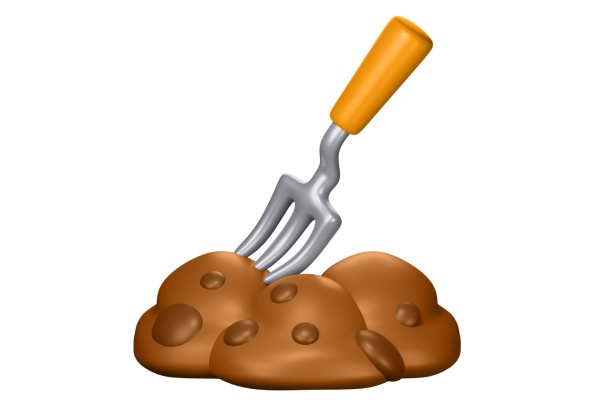
Till the soil as deeply as possible, at least 8 to 10 inches deep.
Deep tilling loosens the soil, allowing the roots of cannabis plants to penetrate deeper.
Each shovelful of the earth should be completely turned over.
When the soil is moist but not wet, till it.
When working with dirt that is excessively damp, it might become abrasive.
Prepare the soil for spring planting in the winter by digging it up. Temperatures and moisture in the winter aid soil mellowness. This is especially crucial if this is the first time the soil has been worked.
To create and preserve the soil, add organic matter every year during soil preparation. Make sure to turn all of the plant material under the ground. If you’re going to add organic material before planting an autumn garden, make sure it’s well-rotted compost.
Rake the soil clean and level before planting. All sticks, rocks, and other debris should be removed.
Preparation of rows
Raising beds has some advantages for growers interested in planting marijuana in rows.
- Allow water to drain out from the roots of the plants.
- Assist plants during periods of heavy rains.
- Permit air to enter the soil.
Make rows 36 inches apart if the garden is large enough.
Some marijuana plants can be planted in rows closer than this if space is limited, but they will require more attention during the growing season.
Straight beds are good, but they aren’t required. Straight beds are less critical in tiny gardens created using a hoe, rake, or other hand tools.
If you’re working with a rototiller or a garden tractor, make sure the rows are straight.
Pull the soil up into 8- to 10-inch-high beds using a shovel or rake. Before planting, pack the beds or let them settle.
Before planting, level the tops of the beds and widen them to about 6 to 8 inches. Plants should be placed on top of the beds.
Using Packed Soil mix
Unless you have an advanced degree in Botany or possess knowledge of soil composite substrates, do what most cannabis growers do; buy a bag of premixed soil.

Our soil mix is a carefully prepared blend of premium ingredients straight from Mother Nature, creating healthy plants and bountiful yields!
Our exceptional soil contains peat moss, organic pine, bark compost, greensand, worm castings, etc.
Only available for local pick up from our store in Tempe, Arizona
Soil Preparation Methods
Different soil preparation methods cater to various garden sizes and budgets:
Double Digging
Ideal for smaller gardens; it involves removing the topsoil layer, loosening the subsoil, and then replacing the top layer.
Raised Bed Construction
Excellent for cannabis cultivation or vegetables; improves drainage and allows targeted amendments.
No-Till or Lasagna Gardening
It focuses on layering organic materials (like compost, straw, and leaves) to enrich the soil without major disruption.
Soil Preparation Tools, Equipment, and Machines
Selecting the right soil preparation tools ensures efficiency and accuracy:
- Hand Tools: Shovels, rakes, and garden forks are perfect for small-scale garden soil preparation.
- Soil Preparation Machines: Rototillers or power tillers save time in larger areas. They break up compacted earth and mix in amendments.
- Soil Preparation Equipment: Tractor attachments like harrows or cultivators handle large plots, making deep tillage and aeration more manageable.
Use these soil preparation methods in combination with the right soil preparation machines for bigger gardens or farms.
Additional Tips for Garden Soil Preparation
- Rotate Crops: Changing what you plant each season helps prevent nutrient depletion and disease buildup.
- Cover Crops: Planting rye, clover, or other green manures replenishes nutrients and improves soil structure.
- Mulch Properly: Organic mulches like straw or wood chips retain moisture and suppress weeds.
Soil Preparation for Planting Cannabis
When preparing soil specifically for cannabis plants:
- Ensure pH levels stay around 6.0–6.8.
- Amend with worm castings, compost, or mycorrhizae to boost root health and nutrient uptake.
- Aerate adequately; cannabis roots need ample oxygen to develop large, potent buds.
Conclusion
Soil preparation is crucial for thriving gardens, whether you’re growing a marijuana crop, vegetables, or ornamental plants.
By following the right soil preparation steps, choosing effective soil preparation tools, and employing suitable soil preparation equipment (such as rototillers or tractor attachments), you can greatly improve soil quality and plant success.
Remember to tailor your soil preparation methods to your garden’s size, soil type, and the specific plants you’re cultivating.
With a bit of planning and the correct soil preparation machines, you’ll create an environment where roots can flourish—leading to healthy, productive growth season after season.

